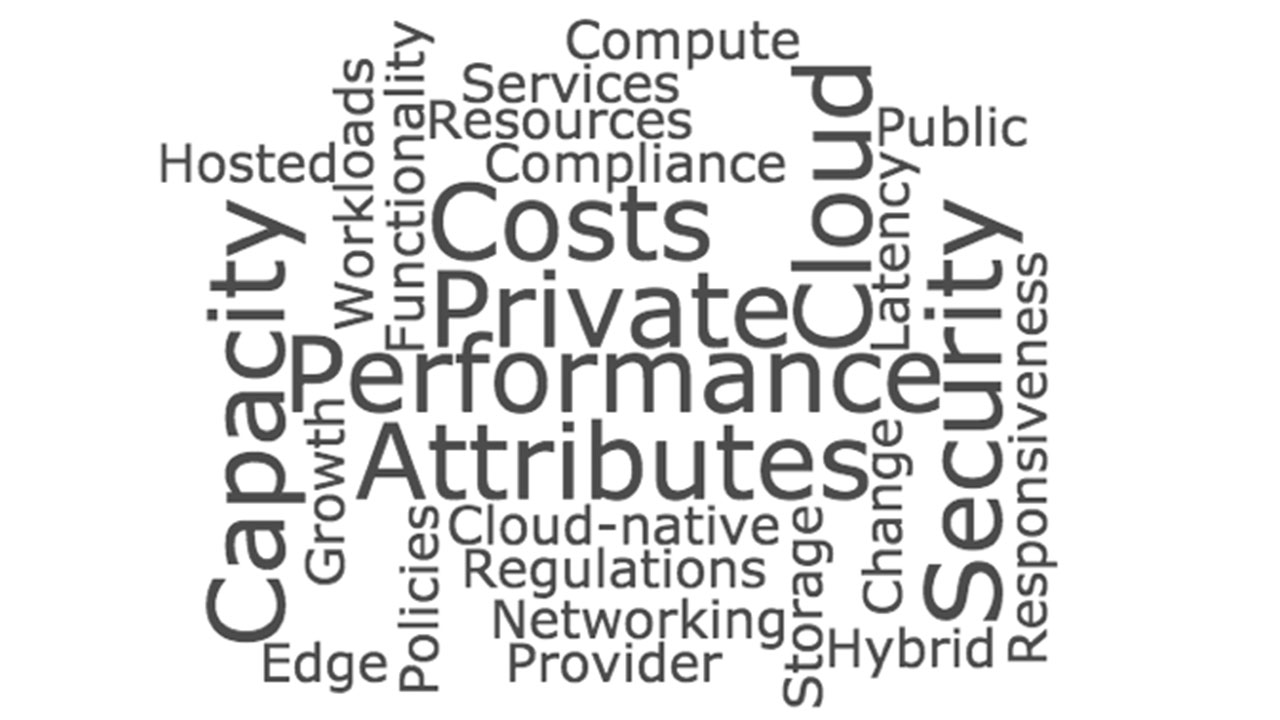On a recent flight, my neighbor and I struck up a conversation about our jobs. My neighbor started as an accountant, but is now consulting and advising businesses in the manufacturing sector on ways to evaluate their supply chain strategy and investments. It was fascinating to hear about the intricacies of a global supply chain including the impact of infrastructure investments, tariffs, import quotas, and (the lack of) skilled workforce.
He boiled down the design including the location of various functions (and the corresponding investments) in a supply chain to a function of a set of attributes. Some of the major attributes he shared included the type of function (ex: manufacturing, distribution centers, etc), associated costs, workforce availability and skill, transportation costs and facilities, government regulations and tariffs, accessibility to raw materials and suppliers, and location of the next consumer in the supply chain.

We discussed how innovation in low-cost transportation across continents and logistics support had brought about the global supply chain revolution. But this blog isn’t about manufacturing, logistics, or supply chain or the role IT is playing around that sector. That is a topic for the future. Instead, I want to talk about the parallels in the IT space, specifically around IT applications and workloads.
Supply chain functions are similar to IT applications, workloads, and services—each with their own set of attributes. These attributes can help determine where to place and run these IT applications. I briefly touched on these attributes in the context of creating an application catalog in an earlier blog.
On a side note, I want to clarify that I am using applications, workloads, and services interchangeably. But in reality, these vary from end-user computing serving end-user apps and desktops to complex ERP applications to next-generation cloud-native applications to storage services for files and objects.
Let’s delve deeper into the attributes that can help determine where to place and run your IT services.
Application and its function —What application or services are you evaluating? Can the application be rehosted, replatformed, or does it need to be re-written? Is it, or can it be consumed as a service from a third party?
What is the function? Is it an application such as a CRM system or a subset of a three-tier application like the web tier or app tier or data platform? Is it for development/test (including UAT) or production or both? Or is it an IT service like object storage?
How is it packaged and are there any requirements on how runs? Is it running on bare metal servers or in a VM/container (or multiple VMs/containers)? Or is it a SaaS application (like Salesforce)?
What are the dependencies and integration points at a macro level? For example, what is the data source and where is the output being used (i.e. who is the end-user)? Is there a need for persistent data storage?
Are there legacy data considerations that need to be taken into account? Are there any organizational considerations for placing this workload?
Performance and capacity—What are the requirements for latency, responsiveness, and throughput performance. Network latencies make the location where an application or service resides and runs important. It is optimal to place latency-sensitive workloads either closest to their source or to the consumer of the service. An example of a latency-sensitive workload is edge inference (EI). As the name suggests, real-time response is needed at the edge for functions such as image recognition. Network latency and need for responsiveness have led to the rise of edge computing—complementing a centralized cloud or datacenter.
Resource requirements—The type of resources needed for an application and workload (compute, storage and networking) also determine the location. As the options in the managed/hosted and public cloud options expand, it becomes more practical to run workloads there from a performance and capacity perspective. Here are four areas to resolve the performance and capacity needs for a workload:
CPU cores of a certain processor generation, single-thread performance,
Memory amount, latency, and bus speed,
Storage capacity, throughput, and latency for active and cold data,
network throughput and latency are needed.
Growth and change rates—How fast is this workload changing and growing (compute, storage, and networking) over time? Will the workload see short term performance and capacity changes such as a short quarter-end report spike or a quarter-long surge tied to the holiday shopping season? Can the application be scaled (temporarily or permanently)? Can the workload be segmented such that some applications can be separated and run elsewhere (ex: stateless applications servers be spun up on rented managed private or public cloud resources while the database is scaled in place on an on-prem private cloud). This ties back to the application or IT services type including how it is being deployed.
Costs—This is one of the major factors for consideration. What are the various costs associated with the IT Service? What model of expenses (CAPEX Vs OPEX) is preferred by the organization?
What is the utilization rate of the service and cost associated with the resources for the duration it is running? For example, infrastructure for an elastic (or seldom used) workload might cost less—compute, memory, storage, and network connectivity—in 3rd party hosted private or public cloud that can be scaled up or down versus buying dedicated infrastructure for it.
What are the upfront costs of the IT service including software/appliance acquisition? Factor in any licensing, pre-paid subscriptions for software and upfront deployment, professional services, consulting, and customization costs. What is the cost comparison of the ongoing management and hosting for various options?
What are the costs associated with migration, replatforming, or rewriting an application?
Look at the net present value and internal rate of return. You can read more about these metrics in Steve Kaplan’s book on ROI for IT leaders here.
Security, Regulatory and Compliance needs—This is the top area of consideration for IT executives when deciding where to run workloads. Are there specific requirements for the application and data that have to be met?
What are the requirements for data locality (i.e. where application data resides) and data encryption? Are there specific requirements around long term data archival and record keeping? Sectors like healthcare and public sector might have added requirements tied to data privacy and data sovereignty.
What are the specific requirements and regulations for application and data access controls and management including administrators and third parties? For example, organizations doing business in Europe have to comply with GDPR. Among other things, it requires strict data access control.
Are there specific network restrictions and regulations for the IT service? For example, the utilities sector might have added requirements for DMZs and network isolation for critical control applications.
Separate from the application attributes discussed above, IT’s staffing and skill sets as well as organizational design play a role in where to place various IT applications, workloads, and services. For example, organizations with a higher propensity to contract out non-core functions may rely on system integrators or service providers to host and run their IT applications. There is also the question of whether an IT application or service should be outsourced? I recommend an article by Niel Nickolaisen in issue 1.0 of the NEXT magazine titled 'Decision Framework for Purpose Alignment.' The article touches on a decision-making model for the optimal use of IT resources. Paraphrasing at a high-level, IT applications and services that are low on the criticality scale are candidates for partnering/outsourcing. Niel recommends saving innovation and creativity for differentiating projects.
Nutanix’s 2019 Enterprise Cloud Index survey identified a few trends related to where organizations are running applications:
First, 73% of the respondents are migrating workloads back to on-prem infrastructure. 61% of the respondents deem application mobility across different clouds as a critical need for their environment.
Second, 60% of the respondents chose security (and most specifically inter-cloud security) as the biggest factor impacting their future cloud strategy including where applications run. Skills availability and regulation/policy were the next two factors.
Third, 85% of those surveyed rank hybrid cloud as their ideal IT operating model. Also, 71% of the surveyed organizations shared that they are planning to move both existing and new applications to a (private or public) cloud platform in the next three years.

The Nutanix 2019 ECI survey findings shows the urgency for IT and businesses to better understand their IT applications. However, capturing an application’s attributes can be daunting, especially for the first few times. Nutanix and our partners including global system integrators and Value Added Resellers have a range of complementary services for qualified organizations and paid engagements to help understand an IT application’s attributes.
We can also help devise the optimal strategy as to where to run applications—whether private cloud, a 3rd party private or public cloud, or on a hybrid cloud. Send the team an email at info@nutanix.com or reach out on Twitter @Nutanix or reach out to your local authorized representative.
As always, we love to hear your take on the topic. Share your views on application attributes and the ECI incluidng what your organization uses to analyze IT applications and services on our Nutanix NEXT community (https://next.nutanix.com).
© 2019 Nutanix, Inc. All rights reserved. Nutanix, the Nutanix logo and the other Nutanix products and features mentioned herein are registered trademarks or trademarks of Nutanix, Inc. in the United States and other countries. All other brand names mentioned herein are for identification purposes only and may be the trademarks of their respective holder(s)